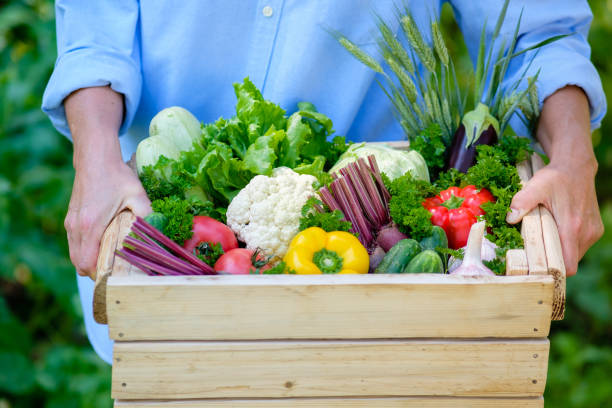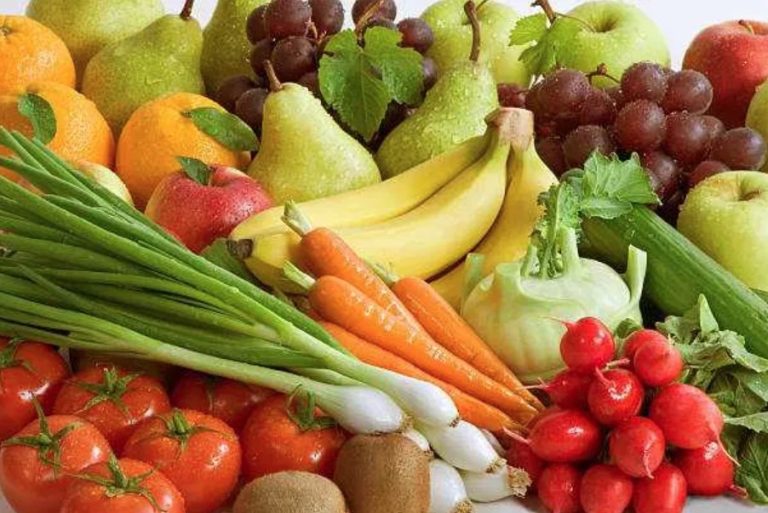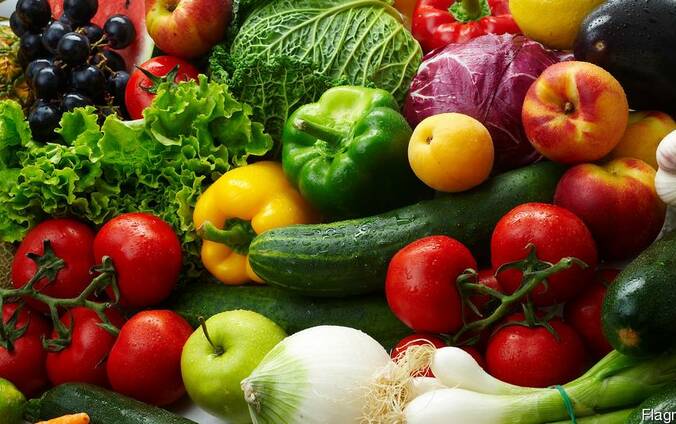The vegan shopping list serves as a help and inspiration for your next purchase. It contains all the basics you need for vegan cooking. Here are the foods that should not be missing from any vegan shopping list.
This vegan shopping list should serve as inspiration, which you can of course always adapt to your own needs and recipe ideas. The fact that a vegan diet leads to undersupply and deficiencies is not necessarily correct. What you’re most likely to be missing is vitamin B12, which is mainly found in fish, dairy, and eggs. If you follow an exclusively vegan diet, you may need to get vitamin B12 through supplements. Talk to a doctor about it.
The key to successful nutrition lies in natural, unprocessed food diversity. These basics should serve as the building block for a natural, unprocessed, sustainable diet with an adequate supply of nutrients.
The elephant portion of your vegan shopping list: veggies
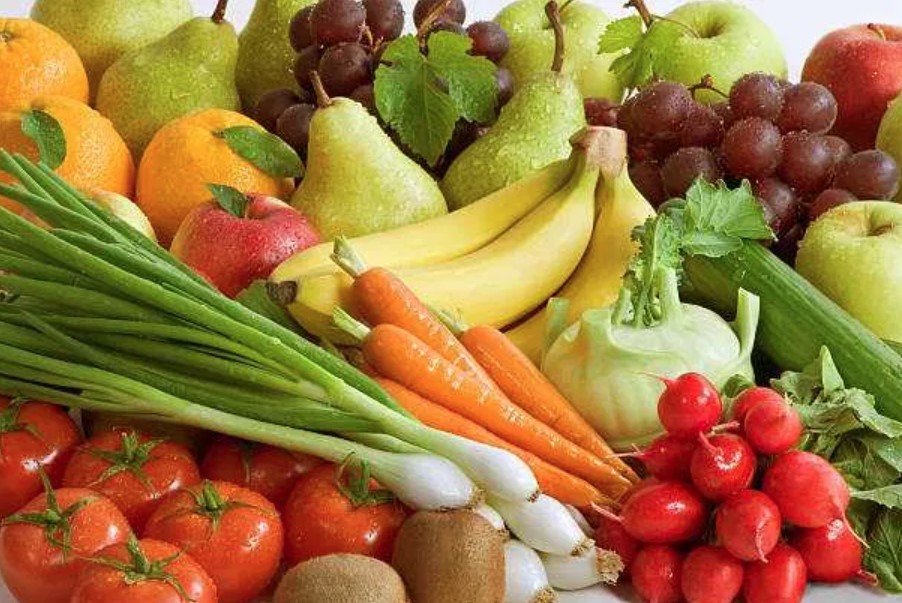
Your healthy vegan diet should consist mostly of fresh vegetables. Ideally three servings (about 400 grams) per day. Ideally, buy seasonal, regional and organic.
Remember: conventional vegetables are better than no vegetables at all. The best place to buy fresh, regional and seasonal vegetables is at the weekly market or in an organic shop. You can now also find unpackaged organic vegetables in many “normal” supermarkets.
You should eat a large proportion of it raw or cook it gently so that the vitamins and minerals are not lost.
must-haves
Seasonal salads
potatoes
Spinach (frozen possible)
onions
Expand your Must Haves individually with the current seasonal vegetables. The seasonal calendar gives you a clue.
Fruit in as many different colors as possible
You can find fruit in all colors of the rainbow. Each color brings different nutrients with it. Eat as varied as possible! Due to the carotenoids, fruit is particularly rich in secondary plant substances. Raw fruit also provides you with more nutrients than cooked. Are you afraid of fructose? Do not worry. As long as you eat the whole fruit, you can’t eat too much fructose. Before you are full.
Must haves here are all fruits that are seasonal and regional!
apples
Local berries, e.g. raspberries, strawberries, blackberries, currants, gooseberries, juniper berries
plums
Grapes
pears
oranges
The same applies here: Adjust your vegan shopping list by giving preference to regional and seasonal fruits.
Tip: simply freeze in-season fruit for later use. So you always have frozen fruit in stock for delicious smoothies. However, you should not freeze fruit that contains a lot of water. We have tips on how to properly freeze food without plastic.
Dry goods should not be missing on the vegan shopping list
- proteins:
Dietary proteins provide the body with essential amino acids, which it needs to build muscles, organs, cartilage, bones, skin, hair and nails.
must-haves
Beans: Black, white, or kidney beans.
Tofu: Smoked, fermented or marinated yourself.
Pseudo-nuts, i.e. these are called nuts, but actually belong to a different food group: peanuts, these belong to the legumes.
Tempeh (fermented soy product)
Chickpeas: Oven baked or used as hummus.
Lentils: Red, green or beluga: As a lukewarm salad, as pasta or dal.
Yeast flakes: Can be used as a cheese substitute, Parmesan-like taste.
A note on legumes: Buy them dry and cook them yourself, they’re cheaper and available in bulk stores in any quantity. By the way: legumes are also one of the many causes of flatulence.
2. Healthy Fats:
Monounsaturated fatty acids are easily digestible and easily digestible. They help to absorb the fat-soluble vitamins A, D, E and K, protect the organs and also have a positive effect on cholesterol levels. So: Don’t be afraid of the right fat! When using oils, those with a favorable fatty acid spectrum should be selected. This means above all the supply of omega-3 and omega-6 fatty acids. Vegetable fats, such as those found in olive oil or avocados, are also included.
must-haves
Walnuts: As a snack or as a porridge topping.
Linseed oil: In the smoothie or in the muesli.
Regional superfood Linseed instead of chia seeds from abroad, these contain a lot of omega-3 fatty acids.
Hemp seeds: Over the muesli or in the smoothie.
Tahini: For sauces or mixed with date syrup as a spread.
Nut butter: In porridge or in smoothies.
Seeds & Kernels: In the salad or as a granola.
3. Carbohydrates:
Carbohydrates are the main source of energy for our body. We need carbohydrates to maintain our brain, breathing, metabolism, heartbeat and body temperature. When we exercise, we need even more of it.
must-haves
Oatmeal: You can use these to make oatmeal, among other things.
Wholemeal bread: How you can bake this yourself is explained here: Bake wholemeal bread yourself: Recipe for moist bread.
Wholemeal Rice: Wild rice, red or whole grain.
Wholemeal pasta or pasta made from hemp, lentils or buckwheat.
Millet: Also popped for your muesli.
Quinoa: Cooked or flaked for overnight oats.
Buckwheat: You can sprout or boil the buckwheat.
Herbs and spices add flavor to your vegan shopping list
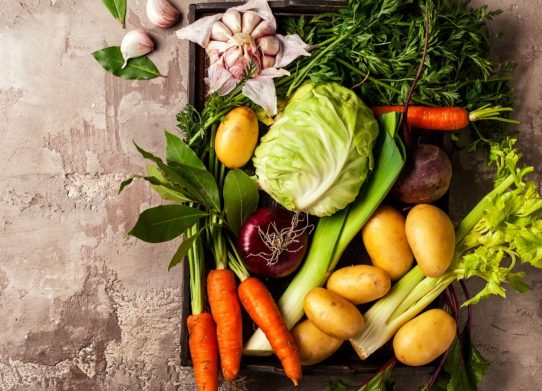
We primarily use herbs and spices for flavor. In medicine, they have also been used as a remedy for a very long time. In addition, they are essential in vegan cuisine and therefore an indispensable part of your vegan shopping list. Cooking without animal protein means seasoning with a variety of herbs and spices to ensure excellent taste.
must-haves
Turmeric: The coloring agent “curcumin” has an anti-inflammatory effect.
Ginger: Rich in vitamin C.
Ceylon Cinnamon: Considered to be anti-inflammatory.
Fresh herbs: Purchase long-lasting herb pots or grow them yourself on the balcony.
Garlic: Can be used as a natural antibiotic.
chili
curry
paprika powder
The vegan shopping list replaces animal products with plant-based alternatives
Milk, yoghurt and cheese are among the most frequently mentioned when people are asked what they think they cannot do without. However, there are now excellent substitute products and even special shops** such as Vantastic Foods. Here, however, it is important to note: unsweetened and the shortest possible list of ingredients.
Substitute products:
Plant drinks: oat milk or buckwheat milk are good milk alternatives, because these cereals are also grown in Germany.
Oat-based yoghurt or soy yoghurt: With both variants, it is best to pay attention to regional cultivation or make them yourself.
Smoked tofu: Ideal as a meat substitute.
Vegan cheese: For example, based on almonds.
Vegan cream substitute
The rule here is: less is more! You don’t need a lot of vegan substitutes. Processed vegan substitutes often contain myriad additives. A vegan shopping list should consist primarily of colorful fruit, vegetables and legumes.











